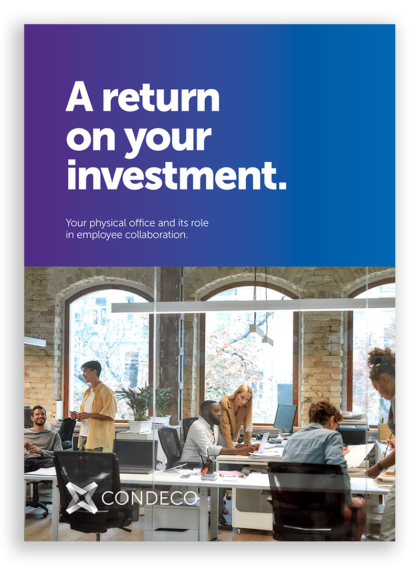As the business world looks towards a post-pandemic world with confidence, it’s important to consider the role that the physical office will play.
While remote working served a useful purpose during the pandemic, for many businesses it is not a practical long-term solution on its own. In order to support better collaboration, foster stronger company cultures and give employees choice and flexibility, a hybrid work model shows the way forward.
However, implementing flexible work – where employees only come into the office as and when they need to – requires a serious redefinition and redesign of the physical office environment.
What does your office of the future look like? What purpose will it serve? And how can it still deliver a strong return on investment?
A tech-driven office that works the way you work
To make a flexible work model a success, and to get the most value from the physical office, there are so many factors to take into account. Where employees work, when they work, how they work, who they work with, and how safe they are when working are just a few of the things to consider. Throw in employee well-being, real estate and utility costs, and demands for sustainability, and maintaining strong office ROI can become an extremely complex undertaking.
A technology-led approach to flexible work, and deploying solutions such as workspace scheduling, is therefore essential to achieving good office ROI, and our eBook explains why.
In it, you’ll discover:
- Why a return to the office is so important in the long-term
- The roles of productivity, employee experience and real estate in defining value
- How technology can help you maximize office value
Making the most of a changing business world
The global business landscape may be changing like never before, but one thing remains constant: the need to support productive, satisfied workers in a way that makes financial sense for the business as a whole. Download your copy of our guide today and start your journey towards an agile, cost-effective future.



